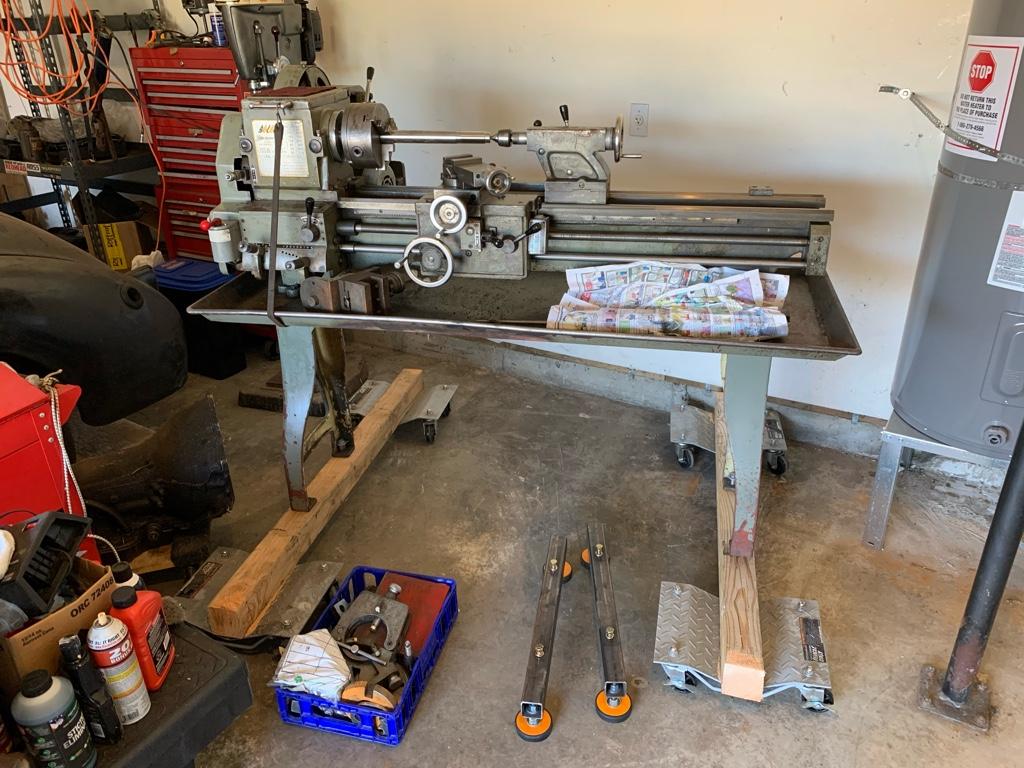- Joined
- Mar 26, 2021
- Messages
- 19
Ok, so I did it. Got my lathe home and in the shop. Now what?  Now I’m suspecting is the start of the expensive part. Tools and measuring devices. I’m very new to machining, never having done more than turning brake drums and rotors. What are the top priorities to get started? I know the first thing needs to be a machinist level to get my lathe level before starting anything. What is a good one to start with? I don’t mind looking at used stuff, or new stuff, I just want good stuff. What are the most used items for setup? I’m assuming dial indicators and mounts? I do have good mitutoyo calipers and a good set of manual micrometers. What advice can you give a new guy? Ultimately most of my lathe work will be gunsmithing, mixed with whatever other projects a lathe can help with.
Now I’m suspecting is the start of the expensive part. Tools and measuring devices. I’m very new to machining, never having done more than turning brake drums and rotors. What are the top priorities to get started? I know the first thing needs to be a machinist level to get my lathe level before starting anything. What is a good one to start with? I don’t mind looking at used stuff, or new stuff, I just want good stuff. What are the most used items for setup? I’m assuming dial indicators and mounts? I do have good mitutoyo calipers and a good set of manual micrometers. What advice can you give a new guy? Ultimately most of my lathe work will be gunsmithing, mixed with whatever other projects a lathe can help with.
Sent from my iPhone using Tapatalk
 Now I’m suspecting is the start of the expensive part. Tools and measuring devices. I’m very new to machining, never having done more than turning brake drums and rotors. What are the top priorities to get started? I know the first thing needs to be a machinist level to get my lathe level before starting anything. What is a good one to start with? I don’t mind looking at used stuff, or new stuff, I just want good stuff. What are the most used items for setup? I’m assuming dial indicators and mounts? I do have good mitutoyo calipers and a good set of manual micrometers. What advice can you give a new guy? Ultimately most of my lathe work will be gunsmithing, mixed with whatever other projects a lathe can help with.
Now I’m suspecting is the start of the expensive part. Tools and measuring devices. I’m very new to machining, never having done more than turning brake drums and rotors. What are the top priorities to get started? I know the first thing needs to be a machinist level to get my lathe level before starting anything. What is a good one to start with? I don’t mind looking at used stuff, or new stuff, I just want good stuff. What are the most used items for setup? I’m assuming dial indicators and mounts? I do have good mitutoyo calipers and a good set of manual micrometers. What advice can you give a new guy? Ultimately most of my lathe work will be gunsmithing, mixed with whatever other projects a lathe can help with. Sent from my iPhone using Tapatalk



